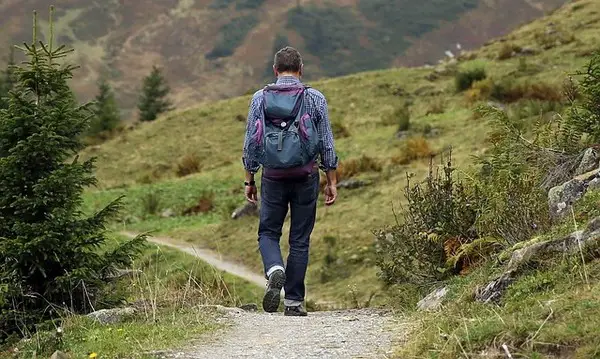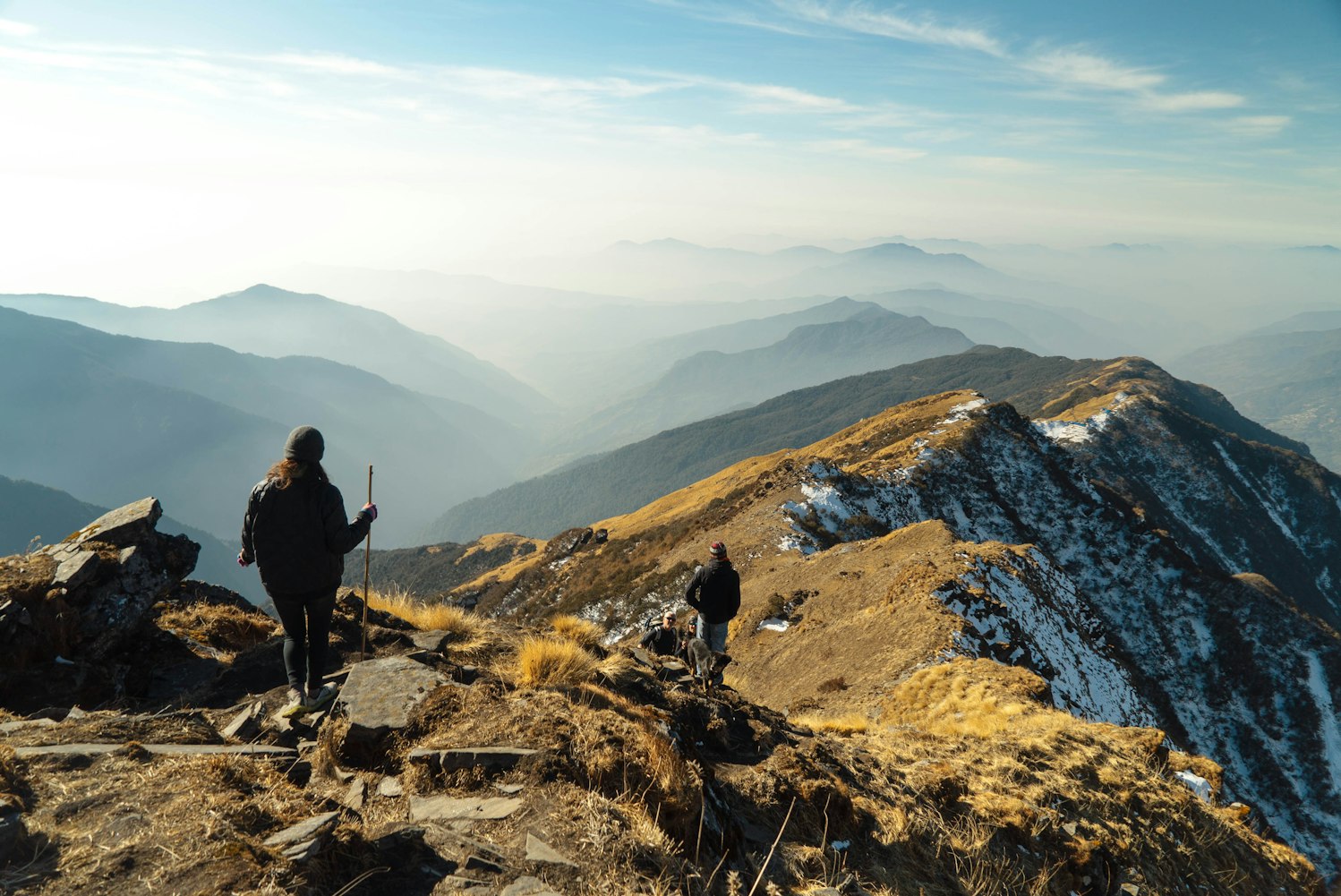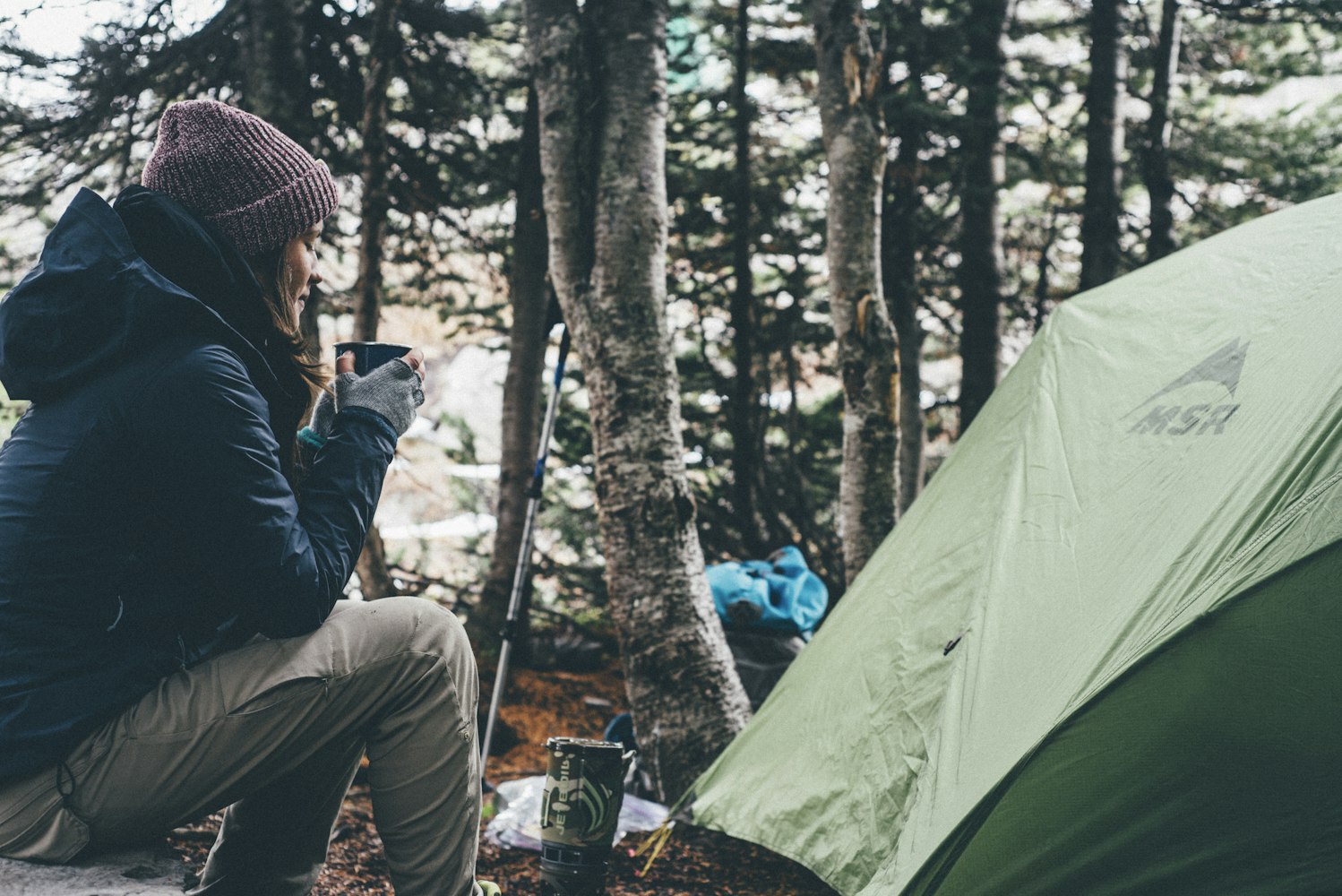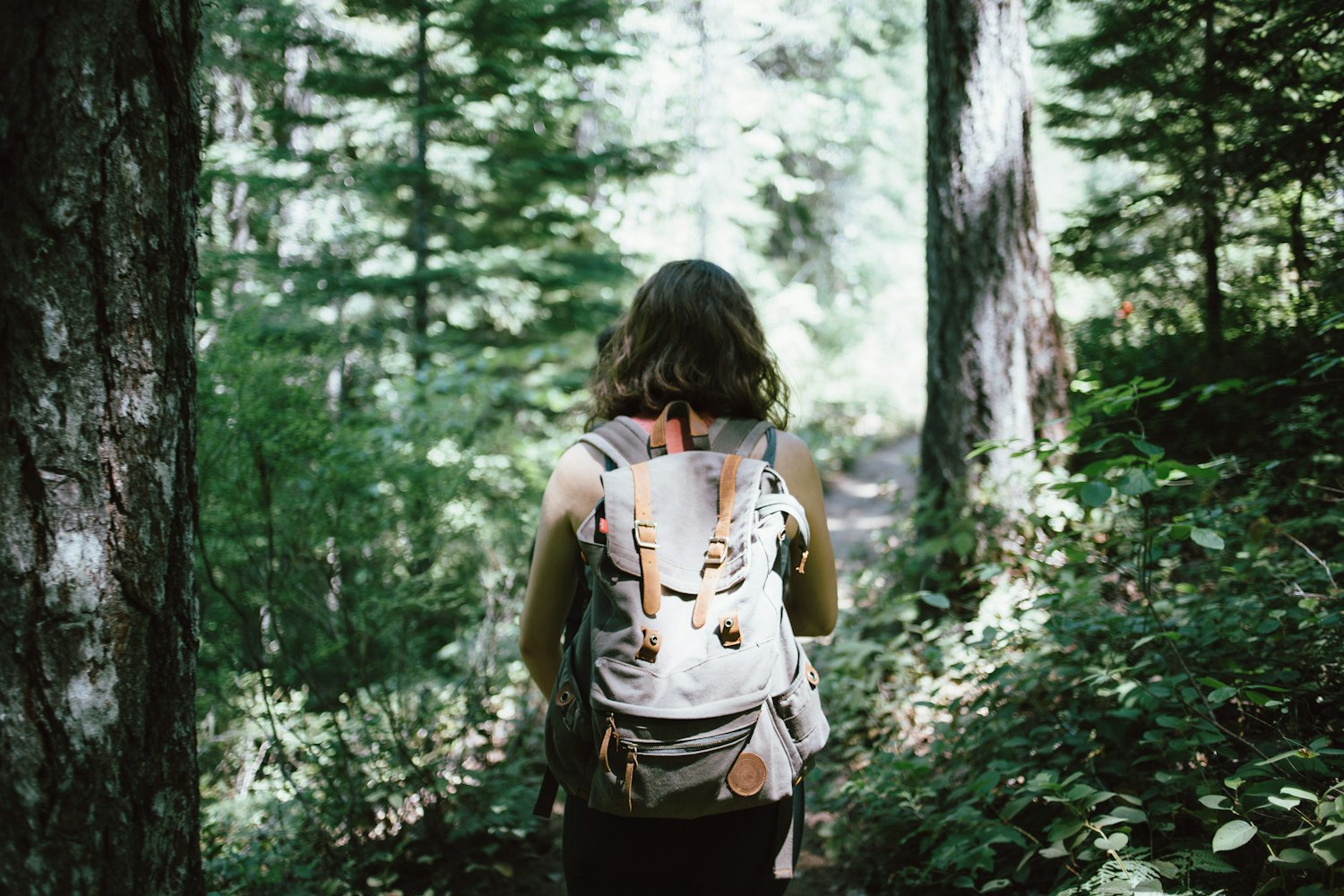Table of Contents
*This post may contain affiliate links. As an Amazon Associate we earn from qualifying purchases.
image source: Unsplash
Hiking is an activity that will have a positive impact on your heart health, blood pressure, weight, and mood. We highly recommend it, but it’s crucial to prepare for a hike. We have put together some hiking tips to help you prepare for your next adventure.
Why Is Preparation So Important?
A bad hiking experience can make you want to swear off outdoor activities forever. There are a number of risks that you should be aware of. Injuries are one of them. Hikers also have to take necessary precautions to avoid getting lost or get caught in bad weather.
It’s also important to choose the right equipment and bring everything you need. Low-quality equipment can give out at the worst possible time and result in a bad hiking experience.
Keep in mind that you will have to rely on yourself or your hiking party. It’s important to take the time to prepare for your journey, choose the right area for hiking, and know what you are getting into.
The preparation process will also give you a better idea of whether or not the hike is right for you. You will get a chance to assess the difficulty and duration of the hike. Ask yourself if the journey you are planning is realistic for your experience and fitness level.
Lastly, we think that preparing for a hike is part of the excitement and adventure! Have fun with this process and approach it as a learning opportunity.
HOW TO CHOOSE THE RIGHT TRAIL FOR YOUR HIKE
image source: Unsplash
You need to consider the incline and type of terrain you can typically find in the area. Pay attention to the average width of the trail and find out whether or not the trail is well-traveled and maintained.
If you lack experience with hiking, we recommend that you look for trails that allow you to take a shortcut mid-hike if you decide that you want to go home sooner.
The temperature of the area is another important factor. Find out how much shade you can expect to find on the trail.
Be realistic about your fitness level and how much experience you have with hiking. If you aren’t in shape, it’s best to avoid trails with steep inclines. A rocky terrain can also make hiking more difficult.
A wide trail that is popular and actively maintained is your best option if you are new to hiking. You won’t have to worry about any of the risks you could encounter in an off-trail environment and will probably find plenty of areas where you can stop and rest comfortably.
CHECK THE WEATHER
image source: Unsplash
If you ask people for hiking tips, checking the weather is something that everyone will recommend. Do some research to get an idea of the kind of weather you can typically expect in the area where you are planning your hike.
Check the weather the day before the hike and check it again before leaving. Don’t hesitate to schedule the hike for another day if the weather doesn’t look great. If you have cellphone coverage during the hike, we recommend that you keep checking the weather.
Hiking in hot temperatures increases your risk of experiencing heat stroke. Cold weather and precipitation don’t make for an ideal experience either. Pay attention to humidity levels when you check the weather.
If you are hiking in cold weather, wear layers. Bring a hat and some sunscreen. Keep in mind that days will be shorter during the winter months and that the sun might set before you have completed your itinerary.
Pack light if you are hiking in the summertime. Wear layers and choose clothes that fit loosely. It’s crucial that you stay hydrated throughout the entire hike. Avoid trails that don’t have enough shade, and don’t hike alone so that you and members of your party can watch out for signs of heatstroke and help each other.
Again, you shouldn’t hesitate to reconsider your plans and go hiking on another day if the weather seems too hot, too cold, or too humid.
WHAT SHOULD YOU PACK FOR YOUR HIKE?
image source: Unsplash
There are a few essential items that you should bring on any hike. If you know someone familiar with the trail where you will be hiking, ask them for some recommendations.
The items you will need can vary in function of where you will hike. You can typically pack light for a day hike but longer treks will require more preparation.
Here are some of the essentials you should bring on your hike:
- A cellphone with a backup battery
- A map and compass or a GPS with a backup battery
- A flashlight, even if you are planning a day hike
- Some sunscreen and lip balm
- Bug repellent
- A hoodie, jacket, and other clothes you can layer
- A hat and sunglasses
- A lighter or some waterproof matches
- A Swiss army knife or other multi-tool
- Food and water
- A tarp or thermal blanket in case you need to build a shelter
- Some toilet paper and hand sanitizer
- Some cash, your ID, credit card, and insurance information
- A first-aid kit
WHAT SHOULD BE IN YOUR FIRST-AID KIT?
image source: Unsplash
It’s best to put together you first-aid kit yourself. You can purchase kits but they might not contain all the items you are likely to need on a hike.
Use a waterproof box or bag to transport your first-aid kit. We recommend that you invest in a waterproof box with compartments to keep all the items organized.
Here are the items you absolutely need to have in your first-aid kit:
- Antiseptic wipes
- Bandages, gauze pads, and safety pins
- Medical tape or liquid bandages
- Ibuprofen
- Antihistamine
- Tweezers
- A splint
- Rehydration salts
Download a first-aid app with an offline mode. You can find different apps with step-by-step instructions that will guide you through bandaging a wound or immobilize a broken bone with a splint.
If you are currently taking any prescription medications, bring them with you. If you have any known allergies, bring treatments you have used in the past such as nasal sprays or eye drops. Depending on what your allergens are and how severe your reactions have been in the past, you should think about bringing emergency epinephrine with you.
If you hike in remote areas, it can take several minutes and even hours for first-responders to reach you. We recommend that you sign up for a first-aid class if you want to get into hiking.
Taking a first-aid class will make you feel more confident about hiking in remote areas, and you will learn how to perform CPR, how to treat allergic reactions, and what to do while you wait for first-responders.
A wilderness survival class can also be interesting. However, we recommend that you sign up for a first-aid class taught by professionals so you can obtain a certification and learn techniques from reliable instructors. Anyone can teach a wilderness survival class, which means that the instructors might not be qualified to teach first-aid techniques.
If you are interested in trekking in remote areas and want to plan long hikes, you should think about investing in a satellite phone. It’s difficult to justify this purchase for a day hike, but investing in a satellite phone will allow you to contact first-responders even when you don’t have cellphone coverage.
LEARN TO RECOGNIZE THE SIGNS OF HEATSTROKE
image source: Unsplash
Heatstroke or heat exhaustion can happen due to exposure to high temperatures. Physical activity increases your risk of experiencing heat stroke.
It’s important to learn to recognize the signs of heatstroke. You need to know how to prevent it and what to do if you notice these symptoms. Keep in mind that anyone can experience heat stroke while hiking, even experienced hikers.
We recommend that you avoid hiking alone, especially during the summer months. You might not be aware that there is anything wrong with you since heatstroke often causes disorientation. It’s best to go hiking with friends, family members, or to meet other hikers in your area so you are never alone on the trails.
The first signs of heatstroke are usually sweating and moist skin. You will start to feel tired and dizzy. Your blood pressure can drop, and you might experience nausea or get a headache. Hikers who experience heatstroke can faint or notice that their pulse is weakening or increasing.
The best way to treat heat stroke is to immerse the person in cold water. Alternatively, you can use a cooling blanket. A damp and cold cloth can be useful if you aren’t able to completely immerse the person in water.
It’s important to drink fluids and eat snacks with salt. Your body loses salt when it sweats, and you need salt for your body to retain hydration.
Stay in a shady and cool area until you recover. If possible, look for an air-conditioned place.
image source: Unsplash
If you or a member of your hiking party experiences heatstroke, rest for as long as needed and head home once temperatures cool down.
You can prevent heatstroke by staying hydrated. Don’t drink alcohol before a hike and avoid sugary drinks as well. Water and sports drinks are your best options.
You should also wear sunscreen and protect yourself from the sun by wearing a hat and sunglasses. Wear loose clothes in layers and don’t hesitate to remove layers. Stay in the shade as much as possible and take a break every hour to rest and hydrate.
Avoid hiking if you know that temperatures are going to be uncomfortable or the weather forecast shows a high humidity level. Some medications can increase your risk of heatstroke. Being overweight also makes you more likely to develop these symptoms.
THE BEST FOODS TO BRING ON A HIKE
image source: Unsplash
Don’t forget to bring some nutritious snacks. There are a lot of options to explore, but you need to look for lightweight foods that are easy to eat.
It’s important to pack light when preparing for a trek, so you should look for foods with a high nutritive value. Bring plenty of snacks to keep your energy levels up during the hike. You should also bring different types of foods since you will need carbs, proteins, fat, fiber, electrolytes, and more.
Here are a few ideas to consider:
- Dried fruits are great for your sweet cravings
- Dried vegetables are filled with vitamins
- Make your own trail mix with your favorite nuts and seeds
- Bring some beef jerky or another type of dried meat
- Pork rinds are another great source of protein
- Seaweed is a superfood that will keep you going
- Hard cheese is rich in calories and fat
- Bring some tortillas to add some carbs to your diet
- Bagels and crackers are other possible options for carbs
- Granola bars are a quick and convenient snack rich in proteins and fibers
- Peanut butter and hummus are great on crackers and rich in fat and proteins
- Dark chocolate is a healthy and nutritious snack if you have a sweet tooth
Bring plenty of fresh water and don’t assume you will find drinkable water on the trail. If you are planning a longer trek, invest in a water purification filter or bring some purification tabs.
You can also bring powder mixes or tabs to add flavor and electrolytes to water, but watch out for the potential sugar content.
Make sure you eat a healthy and filling meal before the hike. Eat some fruits, vegetables, whole grains, and choose a lean source of proteins. Drink plenty of water before going.
CHOOSING THE RIGHT HIKING SHOES OR BOOTS
image source: Unsplash
There are plenty of hiking tips and recommendations regarding equipment. The truth is, the best hiking shoes or boots depends on how much you are willing to spend, how often you hike, and the environment in which you will hike. Weather is another factor to consider.
It’s crucial to invest in a reliable pair of hiking shoes or boots. You could end up developing blisters or worse, sustain an ankle injury if you don’t wear the right shoes or boots.
Try your new hiking boots before going. Wear the socks you wear during the hike when you try them on to make sure they fit properly.
Hiking shoes are a great option for summertime. These shoes are low-cut and flexible. They are suitable for day hikes on well-maintained trails. The downside is that you won’t get any ankle support.
Hiking boots will provide you with more protection and ankle support. You need to invest in a good pair of boots if you want to go off-trail or hike in a rocky area.
image source: Unsplash
Backpacking boots are sturdier and more supportive. However, they are less flexible and breathable than hiking boots. We recommend that you invest in backpacking boots if you need to carry a heavy backpack since you will need the support. You should also wear backpacking boots with stiff midsole if you need protection from rocks.
Full-grain or Nubuck leather boots are durable and water-resistant. However, you will need to break these materials in. Split-grain leather boots typically include some nylon as well. This synthetic blend is a great choice if you want breathable boots.
We recommend split-grain boots if you plan on hiking in warm weather or simply want affordable boots. Look for boots that come with a waterproof liner.
You can also find shoes and boots made from polyester and other synthetic materials. These boots are more flexible and affordable but not as durable as other options.
You should also pay attention to the soles of the shoes or boots you choose. A lightweight and flexible sole is suitable for a day hike on a flat trail. Look for rigid soles with deep ridges if you need protection from rocks or traction.
CHOOSING YOUR HIKING BACKPACK
image source: Unsplash
It’s important to invest in a quality backpack if you want to get into hiking. The ideal capacity and features of the backpack depends on how long your hike will last.
You can bring a 10-liter backpack for a day hike and easily fit all the essentials you will need. We recommend that you use a 20 or 30-liter backpack for a two or three-day hike. Invest in an 80-liter backpack for a longer trek.
There is no need to carry a backpack with a frame for a day hike. A frame will add to the weight of the backpack. However, a frame will add support and reduce fatigue throughout a longer trek.
Pay attention to the straps and back panel when choosing your backpack. Look for a model with plenty of padding. Ideally, your backpack should have a chest and a hip belt, so you don’t always have to carry the weight of your backpack on your shoulders.
Look for a lightweight and breathable fabric. Your backpack should have ventilation in padded areas, especially if you will hike in hot weather.
The pockets and compartments are other important features to look at. A backpack with a top-loading design can typically fit more items, but they will not be easy to access.
A backpack with a front panel should be a more convenient option for a day hike. Look for a backpack with plenty of outside pockets and compartments so you can keep a few essentials handy, such as your snacks and water bottle.
Measure your torso and look up size charts for the backpacks you are interested in. Your backpack should comfortably fall below your neck and rest above your hips. The chest strap should fall an inch below your collarbone and the hip belt should rest just above your hips.
If you experience fatigue and back pain during the hike, have poor posture, or find that you are constantly adjusting the straps, your backpack might not fit properly.
WHAT TO DO IF YOU GET LOST
image source: Unsplash
If you are new to hiking, we recommend that you stay on marked trails. Planning your itinerary in advance and bringing your phone, map, and GPS will help you find your way back to the trail.
However, it’s important to have a plan of action in case you get lost. It’s very easy to panic in this situation. We recommend that you mentally prepare yourself for this scenario and take precautions such as tracking your progress during the hike and either using your phone or a map always to keep track of where you are.
If you notice that you are lost, your first instinct might be to turn around and retrace your steps. It’s best to stay where you are and assess your situation first.
Try to think back and remember the last landmark you saw. When was the last time you knew what your exact location was?
If you are on a trail, stay on it. Pick a direction and keep walking until you find a sign or landmark. If you have a compass with you, use it to determine a general direction you can walk in to go home.
If you aren’t on a trail, look for a stream and follow it until you find a trail. Going downhill is another possible strategy you can use to find a trail.
It’s best to find a safe spot where you can spend the night instead of trying to walk in the dark. You could fall and injure yourself. You need to bring a tarp or at least a thermal blanket so you can build a basic shelter if you get lost and have to spend the night in the woods. Wear all your clothes to stay warm and start a fire if you can do so safely.
Finding a source of water should be a priority. It’s also important to sleep if you need to. Fatigue will make it difficult to think clearly and you will be more likely to panic. Stay warm and dry, and clean any cuts.
Ideally, you should tell someone where you are going before leaving. Plan on checking in with them to let them know where you are on the trail.
Taking photos of landmarks can help you find your way back if you are lost. You should mark your progress on a map to figure out where you are in case you get lost. You can also use rocks or sticks to create some markers and find your way back.
If you are worried about getting lost due to your lack of experience, look for well-maintained trails and stay on them. If possible, go hiking with other hikers who have more experience than you.
HOW TO WALK DURING A HIKE
image source: Unsplash
Your walking technique is very important. It can impact your speed and how far you can go before needing a break.
We recommend that you take a short break every hour to rest and do a few stretching exercises. Taking long breaks during a hike isn’t ideal since your muscles might become stiff.
Stand up straight when you walk. Keep your chin up and look forward. Relax your shoulders. If it’s difficult to maintain a proper posture, you might need to adjust your backpack.
When you walk, make sure that the heel of your foot touches the ground first. Roll on the ball of your foot and touch the ground with all your toes. Find a stride and pace that feels comfortable.
Your speed will depend on your fitness level. Don’t try going faster than what feels comfortable. On average, you should be able to cover three miles per hour if you are walking on a flat trail. You will probably go slower if you are carrying a heavy backpack.
Walking poles can help you get some traction and support when you walk, especially if you are out of shape or want to hike on a trail with elevation. Look for lightweight poles that you can adjust. A hiking staff is another alternative to consider.
Don’t hesitate to adjust the straps of your backpack regularly. Hikers often alternate between using the chest strap and hip belt to carry their load.
image source: Unsplash
It’s important to find a rhythm between your strides and your breathing. If you end up out of breath, try counting your breaths or try matching your breathing to your steps.
If you are walking uphill or downhill, remember to zigzag. This technique will slow you down and help you keep your footing.
If you are going up a steep incline, take a rest step between strides. Take a step forward and straighten your back leg so that you can use it to support your weight before taking your next step.
When going downhill, always be mindful of your center of gravity. Tighten the straps of your backpack to reduce movements. Take short steps, follow a zigzag pattern and be very mindful of your foot placement.
Use these tips to plan your next journey. Take the time to research the trails and area where you want to go and look for other hikers who have more experience so you can ask a few questions or plan a hike together.















